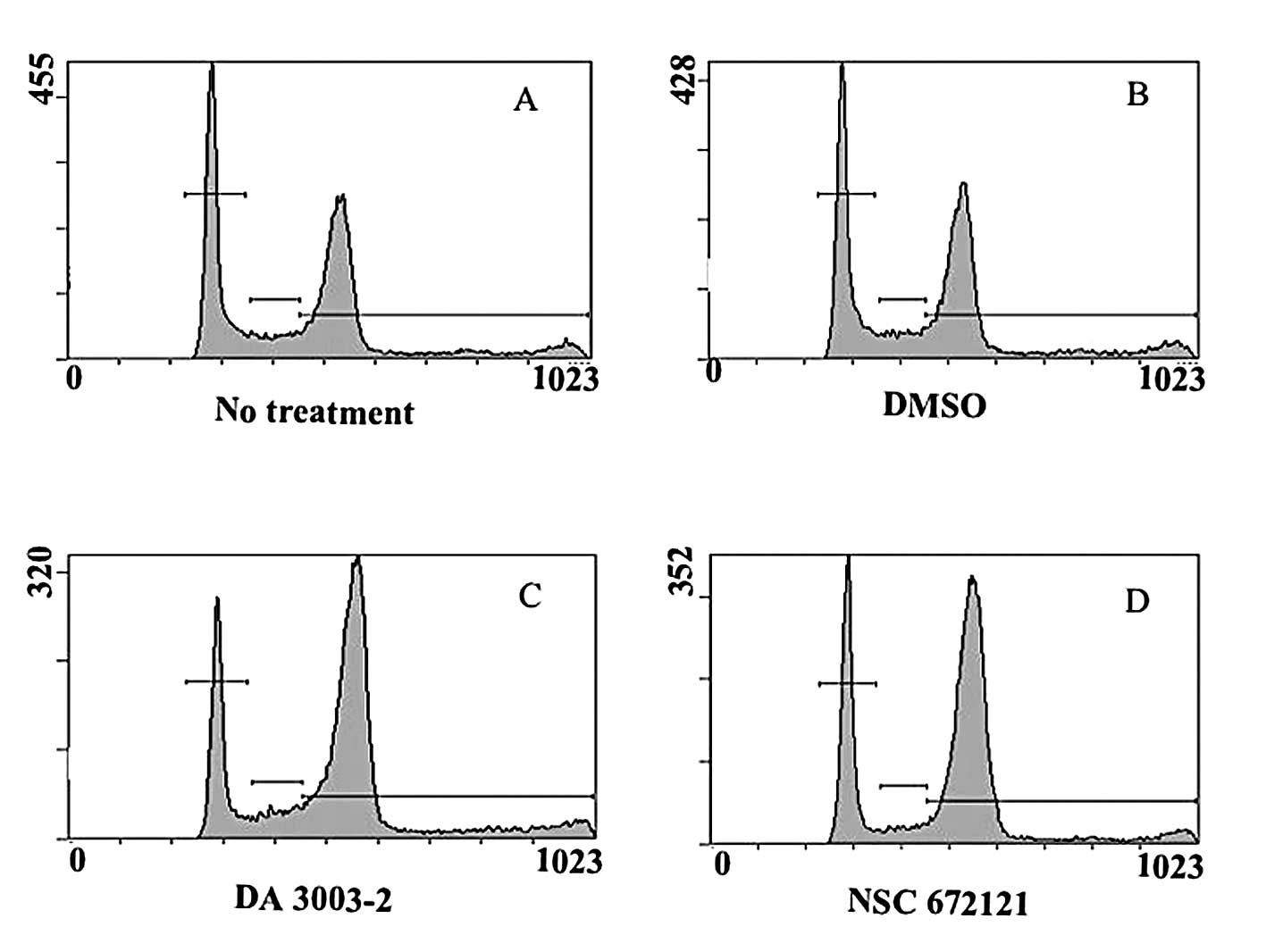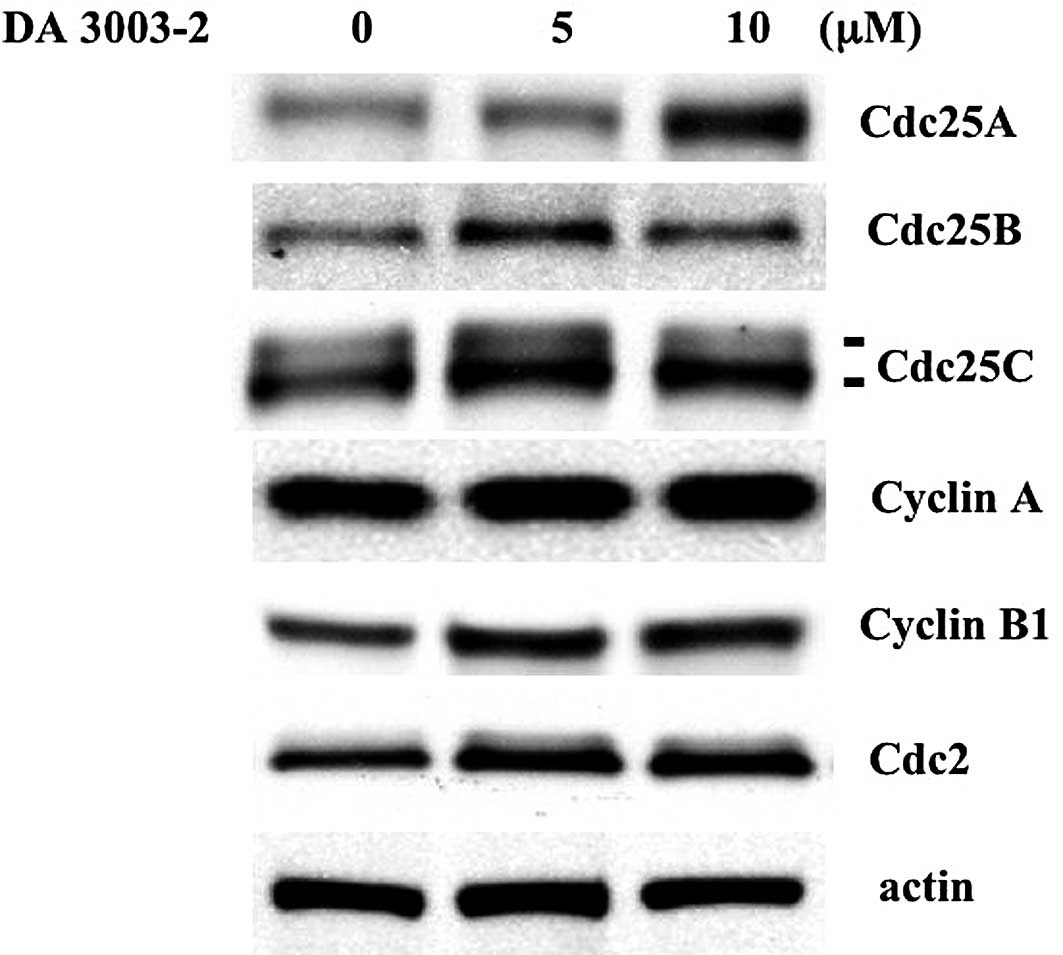G2/M accumulation in prostate cancer cell line PC-3 is induced by Cdc25 inhibitor 7-chloro-6-(2-morpholin-4-ylethylamino) quinoline-5, 8-dione (DA 3003-2)
- Authors:
- Published online on: July 1, 2010 https://doi.org/10.3892/etm_00000101
- Pages: 647-650
Metrics:
Total
Views: 0 (Spandidos Publications: | PMC Statistics:
)
Total PDF Downloads: 0 (Spandidos Publications: | PMC Statistics:
)
Abstract
Cdc25 phosphatases are dual-specific phosphatases that play a role in cell cycle progression. In many human cancers, Cdc25 phosphatases are overexpressed as compared with normal tissues. In addition, overexpression of Cdc25 phosphatases in prostate cancer is correlated with disease progression. The antiproliferative efficacy of Cdc25 phosphatase inhibitor 7-chloro-6-(2-morpholin-4-ylethylamino) quinoline-5, 8-dione (DA 3003-2) was investigated in the PC-3 asynchronous human prostate cancer cell line using a cell-based assay. The time course changes in cell cycle distribution and the modulation of cell cycle regulators after DA 3003-2 administration were analyzed using the MTT assay. We found that the relative IC50 of DA 3003-2 was 2-fold lower as compared with its congener (2-mercaptoethanol)-3-methyl-1, 4-naphthoquinone (NSC 672121). Asynchronous PC-3 cells accumulated in the G2/M phase at 24 h after treatment with 10 µM DA 3003-2 or 20 µM NSC 672121, which represent IC70 concentrations. Treatment of cells with DA 3003-2 caused hyperphosphorylation of Cdc2 tyr15 in cyclin B1 and cyclin A complexes. DA 3003-2 did not downregulate the protein expression levels of Cdc25s, cyclins and cyclin-dependent kinases (Cdks). To conclude, after DA 3003-2 administration asynchronous PC-3 cells accumulated in the G2/M phase, with hyperphosphorylation of the G2/M cyclin-Cdk complex.














